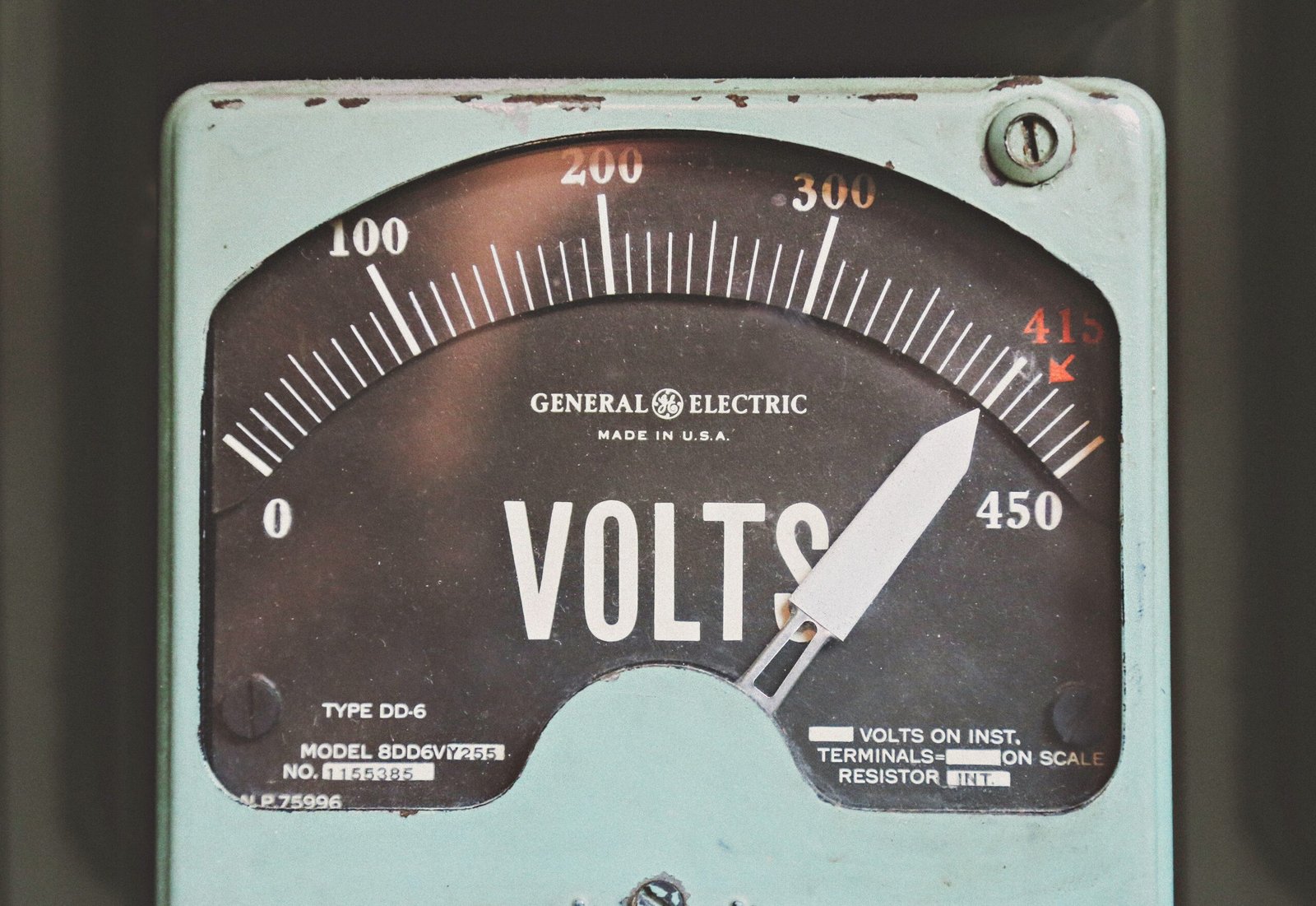Introduction to the Electric Battery Export Market
The electric battery export market is evolving rapidly, driven by advancements in technology and an increasing global shift towards renewable energy solutions.
One of the most prominent types of batteries exported today includes lithium-ion batteries, which are widely utilized in consumer electronics, electric vehicles, and various energy storage systems.
The demand for these batteries has surged in recent years, making electric battery exports a significant contributor to international trade.
Several factors are propelling the growth of the electric battery export market. Firstly, the proliferation of electric vehicles (EVs) has necessitated the development and supply of high-performance batteries capable of meeting varied consumer demands.
This trend is not limited to automotive applications; it also extends to industries that rely on portable electronics, where lithium-ion batteries are a common choice due to their efficiency and lightweight characteristics.
Moreover, the increasing focus on sustainable energy sources has led to a heightened interest in energy storage solutions.
As countries strive to reduce carbon emissions and transition away from fossil fuels, there is a corresponding rise in the need for efficient storage methods, which electric batteries provide.
This factor contributes significantly to generating export from India, as manufacturers look to not only meet domestic demand but also to supply international markets.
Technological advancements in battery production are also playing a crucial role in this market. Innovations aimed at improving battery performance and lifespan enhance the appeal of electric batteries for both consumers and manufacturers.
As efficiency improves, so too does the global competitiveness of electric battery exports, positioning nations like India to become key players in this burgeoning sector.
Current Trends in Electric Battery Exports
The global landscape for electric battery exports is undergoing significant transformation, driven by several pivotal trends. One of the most noteworthy movements is the rapid uptake of electric vehicles (EVs).
As consumers worldwide increasingly opt for cleaner transportation solutions, the demand for high-performance batteries is surging.
According to recent market analyses, the EV sector is projected to grow exponentially over the next decade, thereby propelling electric battery exports to new heights.
Countries like India are positioning themselves as key players in this market, driven by both local and international demand for cutting-edge battery technologies.
Concurrently, advancements in battery technology are revolutionizing the sector. Innovations such as solid-state batteries and improved lithium-ion technology are enhancing performance, longevity, and safety, leading to heightened interest from manufacturers and consumers alike.
Such technological progress not only expands the potential applications of electric batteries in sectors beyond transportation but also catalyzes an increase in export opportunities.
As manufacturers strive to stay competitive, the focus on research and development in battery technologies is paramount.
Furthermore, governmental regulations worldwide are increasingly favoring green energy solutions, adding momentum to the electric battery export market.
Countries are introducing incentives to promote renewable energy, including tax breaks and subsidies for EV production.
The Indian government, for instance, is actively encouraging businesses to produce and export electric batteries by implementing policies that streamline the manufacturing process and facilitate access to international markets.
This regulatory support is crucial for exporters seeking to enhance their share in the thriving global market.
Understanding these trends is essential for businesses engaged in electric battery exports, as they shape the market dynamics and influencing factors.
By closely monitoring consumer behavior and technological advancements, exporters can leverage these insights to optimize their strategies effectively.
The Impact of Technological Advancements
The landscape of electric battery exports is significantly influenced by technological advancements that are reshaping the manufacturing and design of batteries.
Innovations such as solid-state batteries are paving the way for a new generation of energy storage solutions. Unlike traditional lithium-ion batteries, solid-state batteries utilize a solid electrolyte, which enhances energy density and safety.
This evolution is not only improving performance but is also making these batteries more appealing in the global market, thus boosting the potential for export from India.
Additionally, improvements in energy density are noteworthy. Higher energy density allows batteries to store more energy in a smaller size, increasing their efficiency and reducing weight—two critical factors for various applications, including electric vehicles.
This enhancement enables manufacturers to produce lighter and more powerful batteries that attract international buyers, expanding the scope for electric battery exports.
As many countries shift towards renewable energy and electric mobility, the demand for high-performance batteries is likely to surge, creating opportunities for Indian manufacturers to enhance their market presence.
Advancements in recycling technology also play a pivotal role in shaping the export dynamics of electric batteries. As sustainability becomes a priority, efficient recycling processes can reclaim valuable materials from used batteries, reducing dependence on raw material imports.
This not only aids in maintaining a sustainable supply chain but also strengthens the export potential of eco-friendly battery solutions.
Manufacturers focused on sustainable practices can leverage this trend to appeal to environmentally conscious markets, thus establishing a competitive edge in the export market.
In conclusion, the continuous evolution of technology, particularly in solid-state batteries, energy density, and recycling, holds significant implications for electric battery exports.
These advancements position India favorably in a competitive global industry, enabling manufacturers to meet growing international demand for innovative and efficient energy storage solutions.
Regulatory Factors and Trade Agreements
The export of electric batteries involves navigating a complex regulatory landscape that significantly impacts how countries and companies conduct international trade.
The increasing global demand for electric vehicles and renewable energy storage systems has prompted governments to establish regulations that not only ensure safety and performance standards but also address environmental concerns.
Consequently, the regulatory framework surrounding electric battery exports plays a crucial role in shaping export strategies for manufacturers worldwide.
Various international trade agreements impact the efficiencies of these exports. For instance, trade agreements between countries often streamline customs procedures and reduce tariffs, which in turn fosters a more favorable environment for electric battery exports.
Countries such as India, which are ramping up their battery production capabilities, must leverage such agreements to enhance their competitiveness in the global market.
Moreover, these agreements often include provisions that mandate compliance with specific environmental regulations, which can lead to higher export costs if not adequately addressed.

Organizations looking to pursue electric battery exports must pay close attention to global and national regulations, including waste management and battery recycling laws, which are increasingly stringent.
Failure to comply with these regulations can lead to significant penalties and disruptions in supply chains. Developing a robust compliance strategy is essential.
This strategy should include regular monitoring of regulatory changes and an assessment of how such changes affect current and future export operations.
Furthermore, engaging with legal experts in trade law can provide additional insights into navigating this complicated environment.
Staying informed about the evolving regulatory landscape not only helps exporters mitigate risks but also opens up avenues for innovation.
By aligning their practices with emerging regulations, companies can position themselves as leaders in the electric battery market, ultimately capitalizing on the expanding opportunities stemming from electric battery exports.
Sustainable Practices in Battery Production
The evolution of battery production has increasingly leaned towards sustainability, primarily influenced by environmental concerns and consumer demand for greener technologies.
The electric battery exports have come to represent not only a vital component in the energy sector but also an opportunity to embrace eco-friendly practices.
Companies that prioritize sustainable methods in their battery manufacturing processes are likely to increase their appeal to a broader range of stakeholders, including environmentally conscious consumers and investors.
This shift is advantageous for enhancing brand reputation and marketability.
A key element of sustainability in battery production is the use of eco-friendly materials.
Manufacturers are increasingly exploring alternatives to traditional materials like cobalt and nickel, which are associated with significant environmental impacts and ethical concerns.
By investing in sustainable sourcing and developing batteries with less harmful components, these companies can minimize their ecological footprint.
Additionally, innovations in battery technology, such as the use of bio-based materials, are becoming viable solutions, showing promise for an environmentally responsible electric battery market.
The potential for sustainable battery technologies to significantly impact the export from India is notable. As these technologies evolve and become more commercially viable, countries like India stand to benefit immensely.
The Indian government’s focus on promoting sustainable development, alongside initiatives aimed at boosting the electric vehicle (EV) market, creates significant opportunities for electric battery exports.
By positioning themselves as leaders in sustainable battery manufacturing, Indian companies can tap into global markets that value eco-friendly products and practices.
Increased sustainability in battery production not only enhances the marketability of products but also contributes to a global transition towards renewable energy solutions.
Manufacturers that adopt sustainable practices are likely to witness improved customer loyalty, positioning themselves favorably within the expanding electric battery export landscape.
Key Players in the Electric Battery Export Sector
As the demand for electric vehicles (EVs) and renewable energy storage systems continues to rise, the electric battery export sector is rapidly evolving.
Key players in this industry include manufacturers, suppliers, and specialized export firms that contribute significantly to export from India and globally.
Understanding the roles of these stakeholders can offer valuable insights into the dynamics of the market.
Leading manufacturers such as Tesla, LG Chem, and CATL dominate the electric battery production landscape.
These companies invest heavily in research and development to improve battery technology, efficiency, and sustainability.
Their innovations not only propel advancements within the sector but also create a competitive edge essential for success in electric battery exports.
Indian manufacturers, such as Tata Chemicals and Amara Raja Batteries, are also stepping up, emphasizing the nation’s potential in the global market.
In addition to manufacturers, suppliers play a crucial role in the electric battery ecosystem. These entities provide the necessary raw materials, such as lithium, cobalt, and nickel, which are vital for battery production.
Companies like Albemarle Corporation and Glencore are prominent in sourcing these materials, influencing pricing and availability for manufacturers looking to export electric batteries with competitive cost structures.
Moreover, specialized export firms facilitate the logistics and transportation of electric batteries across borders. These companies ensure compliance with international regulations while optimizing supply chains to minimize delays.
Their expertise in navigating the complexities of electrical battery exports helps manufacturers reach potential markets efficiently, establishing smooth paths for trade.
Overall, the interplay between manufacturers, suppliers, and export firms is instrumental in shaping the electric battery export sector.
As each player contributes distinct strengths, understanding these roles provides a clearer picture of the evolving landscape and the partnerships that help drive industry success.
Market Opportunities in Emerging Economies
The global landscape for electric battery exports is undergoing a significant transformation, particularly within emerging economies.
These markets are increasingly becoming focal points for businesses looking to expand their reach, owing to several favorable factors.
Notably, the rapid growth of the middle class in countries such as India, Brazil, and Indonesia is generating a higher demand for electric vehicles (EVs) and renewable energy solutions.
This growing demographic not only creates a robust consumer base for electric batteries but also induces a shift towards cleaner energy sources.
Urbanization is another critical driver in emerging economies. As cities expand, infrastructure development accelerates, creating an urgent need for sustainable transportation options.
Governments in these nations are responding to the increasing urban population by promoting initiatives that encourage the adoption of EVs.
This support often includes subsidies for electric vehicle purchases and investments in charging infrastructure, further boosting the prospects for electric battery exports.
Moreover, many emerging economies are aligning with global environmental objectives, leading to an increase in policies favoring green technology.
Nations are instituting regulations that promote energy efficiency and renewable energy sources.
For instance, India’s push for a National Electric Mobility Mission has opened avenues for domestic and international investment in electric battery production and exports.
Success stories from countries like South Korea and China exemplify how strategic planning can facilitate significant electric battery exports while bolstering local economies.
South Korea’s investment in battery technology research has positioned it as a leader in the global market, while China’s initiatives in battery recycling and sustainability have pioneered a comprehensive approach to large-scale electric battery exports.
Identifying these market opportunities through careful analysis of local and global trends can lead to substantial benefits for companies seeking to capitalize on the growing demand for electric batteries.
The convergence of rising middle classes, urban development, and government support presents a promising horizon for electric battery exports from emerging economies.
Challenges Faced by Battery Exporters
The landscape of electric battery exports is increasingly competitive, and exporters are confronted by several challenges that can hinder their potential for success.
One prominent issue is the disruption of supply chains, which has become particularly pronounced in recent years due to global events such as the COVID-19 pandemic and geopolitical tensions.
These disruptions can lead to delays in obtaining essential components needed for battery production, affecting both timelines and costs.
Fluctuating raw material prices also pose significant challenges for those involved in export from India and other countries.
The prices of key materials such as lithium, cobalt, and nickel can vary dramatically based on market demand and production levels.
Such volatility makes it difficult for exporters to maintain stable production costs and accurately forecast pricing for their customers, which may affect competitiveness in the global market.
Moreover, established players in the battery manufacturing space have considerable advantages, including economies of scale, established supply networks, and strong brand recognition.
New entrants to the market may struggle to compete effectively against these well-established companies, which can lead to significant barriers to entry in various international markets.
To effectively navigate these challenges, battery exporters can adopt several strategies.
Risk management techniques, such as diversifying supply sources or securing long-term contracts with suppliers, can help mitigate the impact of supply chain disruptions.
Additionally, fostering innovation in supply chain logistics—such as implementing advanced inventory management systems or utilizing digital technologies—can enhance efficiency and reduce costs over time.
By tackling these challenges with proactive strategies, electric battery exporters can position themselves for long-term success in an evolving market.
Future Outlook for Electric Battery Exports
The future of electric battery exports is poised for significant transformation, driven by several interconnected trends and shifts in global dynamics.
As nations transition to renewable energy sources and seek to enhance energy efficiency, the demand for electric batteries is expected to escalate.
The International Energy Agency (IEA) forecasts that the electric vehicle (EV) market will continue to expand, consequently increasing the need for high-capacity batteries.
This scenario presents a favorable environment for countries like India, which are focusing on strengthening their battery manufacturing capabilities and, therefore, electric battery exports.
One of the anticipated trends is the integration of advanced technologies into battery production. Innovations such as solid-state batteries, which promise higher energy densities and improved safety, are likely to reshape the industry.
Companies investing in research and development to improve battery technology will not only enhance their competitive edge but also potentially boost export from India, making it a key player in the global battery market.
Moreover, the move towards sustainable practices will influence consumer preferences, creating a heightened demand for eco-friendly battery solutions and opening new avenues for exports.
Another factor to consider is the geopolitical landscape, which could impact electric battery exports. As countries prioritize energy independence and resilience, strategic partnerships may emerge.
Collaborations with raw material suppliers and technology innovators will be crucial for India to position itself effectively.
Furthermore, the emphasis on localizing supply chains and reducing dependence on imports will likely reinforce the potential for export growth from India in the coming years.
Overall, the electric battery export market is on the cusp of remarkable growth, characterized by technological advancements, changing consumer behaviors, and evolving international dynamics.
As these factors converge, they will undoubtedly create new opportunities and solidify India’s role in the global battery supply chain over the next decade.


